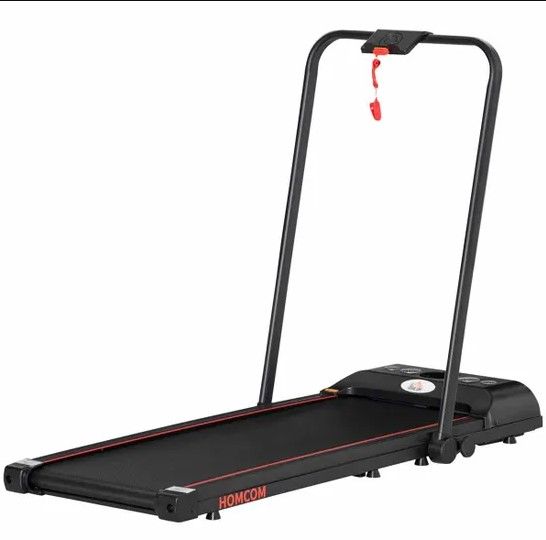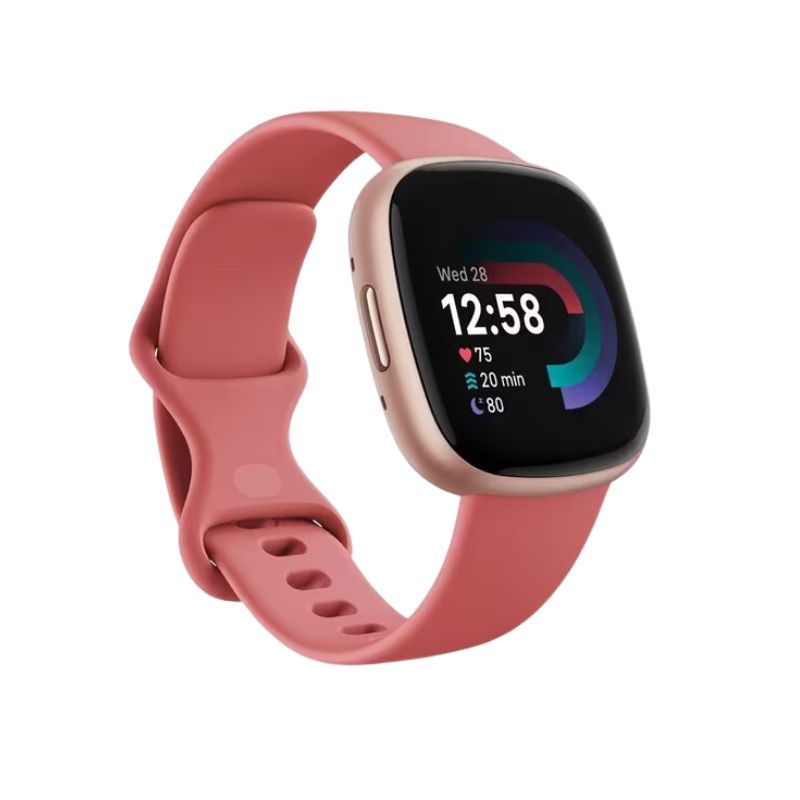When it’s cold outside, there’s sometimes nothing better than a treadmill workout to reach your daily exercise quota. While we’d all rather be outside in the fresh air, it’s not always possible in the winter months.
Walking, interval training, or doing Couch to 5km on a treadmill – all have health benefits. Using a treadmill can help improve your cardiovascular health, boost endurance, and help you burn calories, as well as keep you out of the cold weather.
These treadmill workouts, devised by a team of certified personal trainers and cardio experts can help you reach your goals this year. We’ve got options for walking and running, so you can choose the one you prefer. All you need is a good pair of running shoes, a treadmill in the gym or at home, and 20 minutes.
Benefits of a treadmill workouts
- Efficient: Treadmill workouts are efficient. As our instructors reveal, you only need to go running for 20 minutes a day or a few times a week to see a difference in your fitness levels.
- Easy to access: Where there’s a gym, there’s a treadmill. You won’t struggle to find a place to do your workout.
- Easier on bones and joints: Compared to hard pavements or frost-covered grass, a treadmill is light on your hip, knee, and ankle joints, making it a good option for those unused to this type of high-impact exercise.
- Proven health benefits: “Walking and running are known to lower the risk of heart disease, stroke, certain types of cancer, dementia, high blood pressure, type 2 diabetes and obesity,” says Emma Jefferey, a certified PT and female movement specialist. “The NHS recommends 150 minutes of moderate-intensity physical exercise per week – between 20 to 30 minutes per day.”
- You can customise your terrain: With a treadmill, even if you live in a completely flat area, you can add hill walking or running to your workout. This can help improve your endurance, boost your heart rate, and reduce the risk of injury as “your body weight acts as resistance” on the incline, says Tasha Teanby, a certified personal trainer working with Myprotein.
- Do it at home: While some gym memberships cost as little as £20 a month, you can also invest in your own treadmill or walking pad and get your workout done at home.
Try these treadmill workouts
Incline walking workout
- Warm-up: 5 minutes of flat walking at a light-moderate pace (speed: 3-5km/h, incline 0%)
- Workout:
- 4 minutes at incline 6% – moderate pace (speed 5-6km/h)
- 3 minutes at incline 10%- slightly slower pace, but try and maintain if possible (speed: 4-6km/h)
- 2 minutes at incline 15% – power walking pace (speed: 4-5km/h)
- 1 minute incline at 0% – recovery (speed 3-4km/h)
- Cool down: 5 minutes of flat walking at a moderate-light pace, reducing over time (speed: 3-4km/h, incline 0%).
Teanby, who created the session above, has some tips for beginners. “Start with a maximum incline of 8 to 10% and adjust as needed. This will be very personal to you. Throughout the treadmill workout, focus on your form and engage your core by using a natural motion and keeping your posture upright, and avoid holding onto the handles for balance, unless it’s absolutely necessary,” she says.
Interval training workout
- Warm-up:
- 5 minutes of brisk walking, working up to a light jog (speed: 4-8km/h, incline 0%)
- Intervals:
- Sprint for 30 seconds (speed: 9-12km/h, incline 1-3%, if possible)
- Recover with a light jog or walk for 90 seconds (speed: 4-8km/h, incline 0%)
- Repeat 5 times.
- Cool-down:
- 5 minutes of walking at a moderate pace, reducing to a slow walk (speed 3-5 km/h, incline 0%).
“This is a daring way of utilising the treadmill,” says Teanby. “High-intensity interval training (HIIT) sessions combine periods of intense effort with active recovery, which is more demanding on the cardiovascular system. This helps to enhance your VO2 Max, helping your body use oxygen more efficiently.”
Steady running workout
- Warm-up: 5 minutes of brisk walking or easy running (speed: 4-8km/h, incline 0%)
- Workout:
- Raise the incline on your treadmill to 1 or 1.5 to mirror outdoor terrain (and less the impact on bones and joints).
- Start running at a steady pace, one that feels faster than your warm up but not so difficult you can’t keep it going for 30 minutes.
- Try not to get slower as you move through the 10 minutes. Start at a slower pace and speed up.
- Run steadily for 10 minutes, increasing your time moving as your fitness improves to 15 or 20 minutes and above.
- Cool down: 5 minutes of walking, reducing to a slow walk (speed 3-5 km/h, incline 0%).
If you’re sticking with steady cardio in the colder months, making it harder as your fitness progresses is important. This will help “maximise those amazing benefits we get from moving our body in this way”, says Jefferey, a peri and postmenopause exercise specialist.
“That could be increasing the time on the machine, increasing the incline, increasing speed, incorporating intervals and building up to running – all of which will have greater cardiovascular benefits.”
If you’d prefer to do your treadmill workout at home, the Mobvoi Home Treadmill is a tried and tested pick from Editor Kerrie Hughes and a worthy investment. “It’s so simple set up and I was surprised by how little noise it makes,” she says. “You can use it under your desk to get the benefits of walking at home or you can run on it.”
Homcom Foldable Walking Treadmill W/ Led Display Black
The Fitbit Versa 4 is one of our top-rated devices. Available in various colours, this fitness tracker will tell you when you’re in the desired heart rate zone for various goals – like boosting fitness or burning fat. It’s not essential – but it’s certainly useful to have.
Is 20 minutes on the treadmill enough?
If you’re not doing any other workouts, you’d need to steadily run for 20 minutes every day to reach the NHS-recommended 150 minutes of moderate-intensity exercise per week. To reduce this to 75 minutes of exercise, increase the intensity to ‘vigorous’ exercise.
“I always recommend including a couple of weekly cardio sessions – around 60 to 90 minutes total. This aligns with the general guidelines for adults to maintain overall health,” says Abi Lockwood, a certified PT working with 24/7 Fitness.
That said, adding different workouts can also be very beneficial to a routine. This includes strength training for women, which has the dual benefit of reducing the risk of running-related injuries and conditions like osteoporosis later in life.
Are treadmill workouts good for weight loss?
Absolutely, it’s possible to lose weight with the help of a good treadmill workout. “I’m a big fan of Zone 2 training, particularly in the perimenopausal period and beyond, which walking and jogging fall into. Zone 2 training means that when you exercise, you are trying to keep your heart rate within a specific range, where the body burns fat rather than carbohydrates for energy,” says Jefferey.
“This improves the body’s ability to utilise stored fat, which is important for weight loss,” she says. “These workouts also increase our body’s ability to burn fat at rest and can counteract the slower metabolism that can accompany perimenopause.”
What does this look like? Zone 2 is “considered an easy to moderate level of exercise, or 60 to 70% of your Maximum Heart Rate, that you can sustain for a period of at least 30 minutes,” the PT tells us.
You can use one of the best fitness trackers – I’d recommend the Fitbit Versa 4 or Coros Pace 3 in particular – or go by how you’re feeling to work out whether you’re working hard enough.
“It’s a level where you can carry on a conversation comfortably without gasping for breath but if you want to work it out accurately, your Maximum Heart Rate (MHR) is 220 minus your age,” says Jefferey. “Your Zone 2 training level would be a range of 60 to 70% of this. So, if you were 50 years old, it’s a range of 102 to 119 beats per minute.”







































